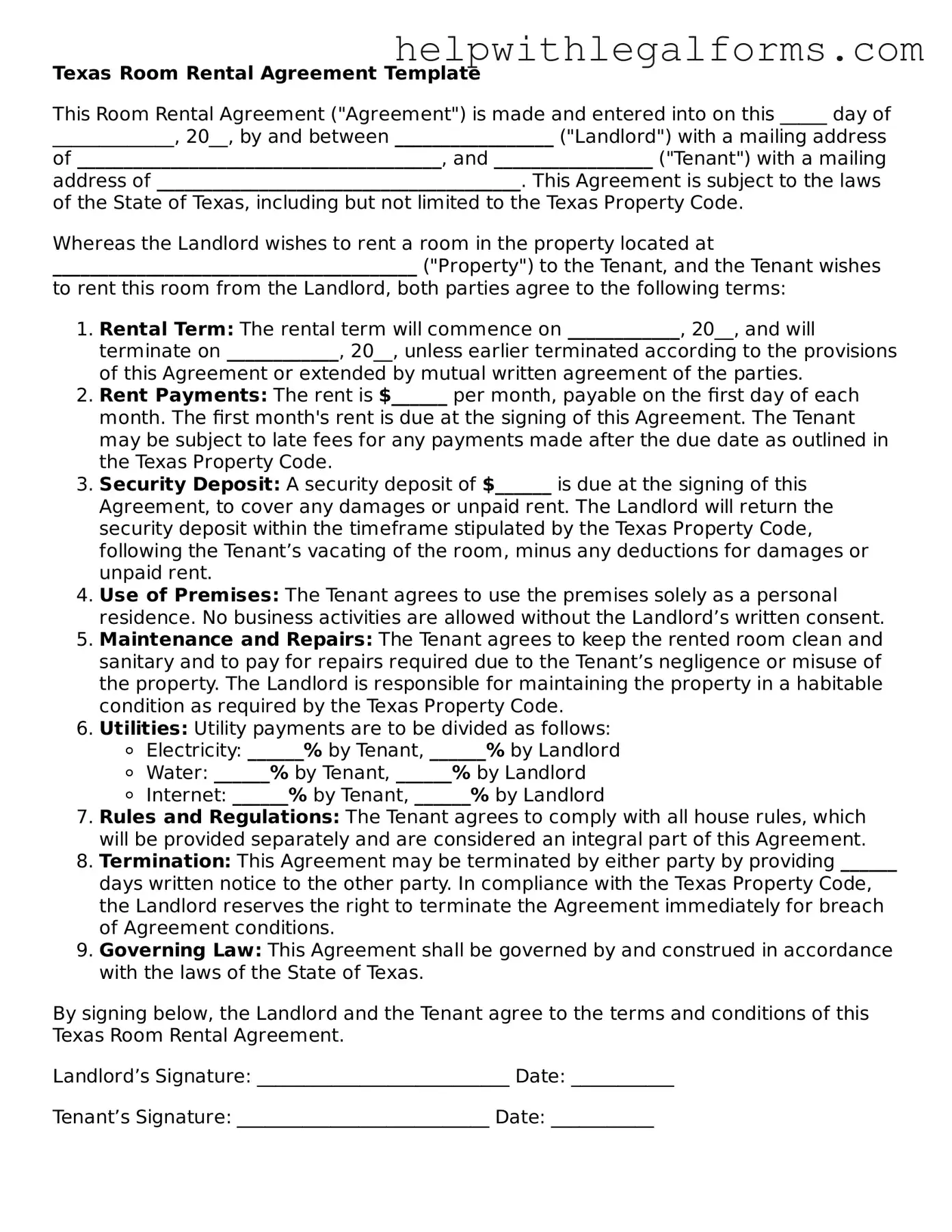What is a Texas Room Rental Agreement?
A Texas Room Rental Agreement is a legally binding document between a landlord and a tenant, specifically for the rental of a room within a house or apartment. It outlines the terms and conditions related to renting the space, including rent amount, payment schedule, rules about common area use, and responsibilities of both parties. This agreement ensures that both sides understand their obligations and rights, aiming to prevent misunderstandings and disputes.
Who needs to sign the Texas Room Rental Agreement?
The agreement must be signed by the landlord or the property manager, and the individual tenant who will be renting the room. If there are co-tenants involved in the renting of the same room, they should also sign the agreement to ensure that all parties are legally obligated to abide by its terms.
What should be included in the agreement?
The agreement should include the names of all parties involved, the rental period, the amount of rent and its due date, any security deposit required, rules regarding utilities and amenity usage, maintenance responsibilities, and any other conditions or rules specific to the premises. It's also important to include the legal address of the property and specify the exact room or area being rented.
Is a security deposit always required?
While a security deposit is common, it is not always required for a room rental agreement in Texas. The decision to require a security deposit is at the discretion of the landlord. If a deposit is required, the agreement should clearly state the amount, the conditions for its return, and any circumstances under which the landlord may retain part or all of the deposit.
Can the terms of the agreement be changed?
Yes, the terms of a Texas Room Rental Agreement can be changed, but any modifications must be mutually agreed upon by both the landlord and the tenant. It's crucial that any changes are documented in writing and signed by both parties. This addendum should then be attached to the original agreement, ensuring that the new terms are legally binding.
What happens if either party violates the agreement?
If either the landlord or the tenant violates the Texas Room Rental Agreement, it may give the other party grounds to terminate the agreement early, pursue legal action, or seek damages. Specific consequences should be detailed within the agreement, providing clarity on the steps that can be taken in case of a breach. This encourages clear communication and adherence to the agreement's terms to avoid potential conflicts.
